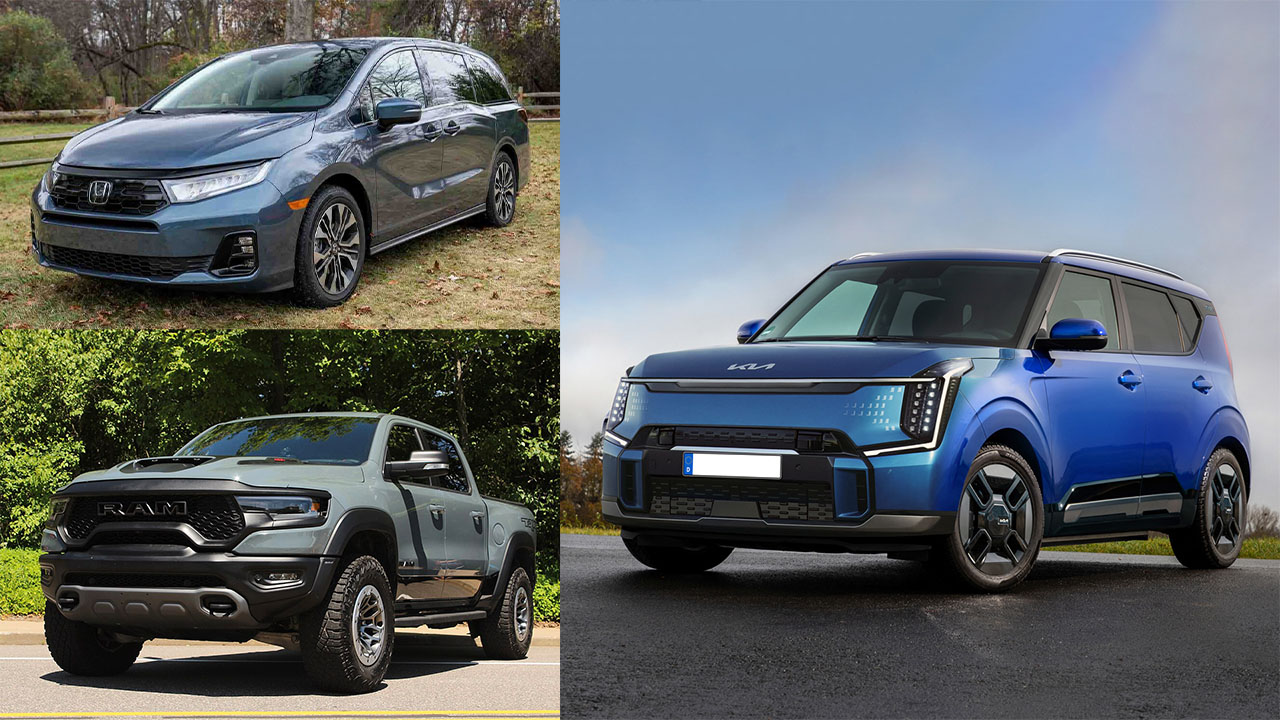Driving for Uber and Lyft comes with demands that everyday drivers might not usually think about. If you’re planning to spend long hours behind the wheel, the seat must be comfortable, and the infotainment system should be easy to reach and simple to use.
Keeping costs low is important, and strong fuel efficiency means fewer gas station stops and less strain on your wallet.
A spacious and easy-to-clean second row where adults can sit comfortably will help you earn higher ratings from passengers, especially those stepping into your car after a long flight.
Having a roomy, easily accessible cargo area or trunk makes handling pick-ups and drop-offs much easier, and multiple USB ports allow passengers to keep their devices charged.
Reliable Cars for Rideshare Work
Meeting all these needs can be a lot to expect from one vehicle. That’s why we’ve compiled a list of the best choices, featuring models that can meet a range of ride-share needs, from Uber Black to Lyft Green.
2025 Honda CR-V Hybrid
The 2025 Honda CR-V Hybrid stands out as one of the top choices in its segment due to its impressive versatility. This compact hybrid SUV achieves fuel economy ratings of up to 43/36 mpg city/highway.
These excellent figures are particularly beneficial for drivers who frequently navigate stop-and-go traffic in urban areas. An available all-wheel-drive system offers added confidence in slippery conditions, although it reduces fuel efficiency by 2 to 3 mpg.
Inside, the CR-V Hybrid features a high-quality, stain-resistant interior, with spacious seating in both rows. The first row is especially plush, making it ideal for drivers who spend extended hours on the road.
Passengers will enjoy the reclining rear seats, which add comfort for longer rides. The CR-V Hybrid also boasts a large cargo area suitable for transporting luggage, and multiple USB ports are available, allowing rear-seat passengers to charge their devices with ease.
The 2025 Honda CR-V brings a lot to the table for compact SUV shoppers. It boasts a spacious interior with excellent cargo room, tech features that are intuitive and easy to use, and a ride that stays smooth and comfortable even on rougher roads.
However, it’s not without flaws. Storage space for small personal items inside the cabin is limited, and the hybrid powertrain can get noisy and feel sluggish when climbing hills.
There are no significant updates for the 2025 CR-V. It continues as part of the sixth CR-V generation that was introduced back in 2023. Honda didn’t make major tweaks this time around, instead choosing to stick with what’s been working well.

Positioned between the subcompact HR-V and the larger midsize Passport and Pilot, the CR-V firmly holds the middle ground in Honda’s SUV lineup.
Historically, the CR-V has earned its spot among the best small SUVs in its class, and this new generation continues that tradition. For 2025, Honda hasn’t made any substantial changes — a clear sign of confidence in the current model’s design and appeal.
Cost to drive estimates for the 2025 Honda CR-V LX 4dr SUV (1.5L 4cyl Turbo CVT), as well as for competing vehicles, are based on 15,000 miles per year with a driving mix of 55% city and 45% highway, using an average fuel price of $3.13 per gallon for regular unleaded fuel in North Dakota.
Based on these numbers, the monthly fuel cost for the CR-V LX comes out to $127, compared to $176 per month for the average midsize SUV.
Honda has consistently stayed in tune with what its customers are looking for, and when it comes to a compact SUV, that means focusing on comfort and convenience.
While some competitors highlight performance credentials or off-road prowess, the CR-V sharpens its edge on the things that matter most to everyday drivers.
The suspension is well-calibrated, easily smoothing out bumps in the road. The seats are well-padded for long-haul comfort, and the interior remains quiet even at highway speeds, which helps reduce fatigue or lets kids nap peacefully in the back.
Storage space is another highlight, with a generous 39.3 cubic feet of cargo room behind the rear seats — perfect for family gear, luggage, or even a major Costco haul.
If you’re shopping around, there are a few competitors worth considering alongside the CR-V.
The Mazda CX-50 offers sharp styling and lively performance, but it doesn’t match the CR-V’s fuel economy and tends to be more expensive. It’s a good pick if you’re looking for a little more excitement behind the wheel.
The Subaru Forester, on the other hand, leans heavily into all-weather capability and a touch of off-road ruggedness. Still, for the majority of buyers, the CR-V remains the most well-rounded choice, delivering an ideal balance of comfort, space, usability, and everyday practicality.
Also Read: 10 Vehicles With Best Long-Term Fuel Economy That Save You Money Year After Year
2025 Honda Odyssey
The 2025 Honda Odyssey is well-equipped to safely transport a family and their luggage to the airport. Standard features like the power liftgate and Magic Slide second-row seats make it much easier to load and unload passengers and cargo.
Additionally, the power sliding rear doors can be operated from the driver’s seat, allowing for smooth pick-ups and drop-offs. The CabinTalk system, originally designed for parents to speak to children in the back seats, also enables drivers to easily communicate with a van full of travelers.
Among the standard safety features are adaptive cruise control and forward automatic emergency braking. This year, the infotainment system received an update, featuring a larger touch screen, wireless smartphone connectivity, multiple USB ports, and a Wi-Fi hot spot.
Minivans are all about function—how many people they can comfortably carry, how easily they handle cargo, and how well they adapt to the unpredictability of daily life.
A minivan that can’t excel at these tasks really isn’t any better than the three-row, car-based SUVs that have replaced many of them on the market.

After spending two weeks with the updated-for-2025 Honda Odyssey, it served as a powerful reminder why minivans still reign supreme when it comes to interior comfort, customizability, and what can only be described as pure interior brilliance.
When it comes to seating customization, the 2025 Odyssey stands out in a big way. While a lot of minivans have a clever trick or two to boost their flexibility, the 2025 Odyssey’s Magic Seats truly sit at the top of the class—tied only with Chrysler’s Stow ’n Go system—as our favorite van seating solutions.
Even though it maintains a fairly traditional three-row, 2-3-3 seating layout for eight passengers, the second and third rows offer almost limitless flexibility.
The 60/40 split third row can flip forward and tumble neatly into the floor of the cargo area, allowing you to adjust seating capacity by removing one, two, or all three seats in exchange for more room for your gear.
The second row, which is split 40/20/40, takes versatility even further. Each of the three seats can fold forward individually, with the center seat revealing cupholders when flipped down.
The real magic happens when you remove the center seat entirely, which is made easy thanks to clear latches and handles located at the base of the seat frame.
Once lifted out, the Odyssey maintains seating for seven passengers while creating a center aisle that gives easy access to the third row. If you prefer, you can also slide either of the outboard seats toward the center, making it even simpler to reach the back row via one of the side doors.
Those outboard seats can also be removed just as easily, though they are heavier than the center seat because they carry the fore-aft sliding mechanisms with them (the side-to-side sliders remain embedded in the Odyssey’s floor).
This system gives owners a tremendous amount of freedom to configure the van’s seating layout however they need, depending on the situation.
2025 Hyundai Tucson Hybrid
The 2025 Hyundai Tucson Hybrid ranks highly among the best hybrid SUVs, and it received updates both inside and out this year.
The base model achieves 38 mpg in combined driving, which is typical for a hybrid SUV. Thanks to its low center of gravity and standard all-wheel drive, this SUV feels stable on the road and is notably easy to handle.
Inside, this compact hybrid SUV features a modern and upscale design. Four USB ports come standard, and the updated infotainment system now offers a larger screen along with wireless smartphone connectivity.
Drivers will be pleased with the return of physical knobs, making it easier to adjust settings without taking eyes off the road. Tall adults will find the rear seats spacious and comfortable, and the Tucson Hybrid provides a generous cargo area, offering 38.7 cubic feet of space with all seats upright.
The 2025 Hyundai Tucson stands out as not just a stylish pick among compact SUVs, but also a highly practical one, offering a roomier cabin and cargo area than many of its competitors.
A 187-hp four-cylinder engine paired with front-wheel drive comes standard, while all-wheel drive remains optional.
Although its acceleration is on the slower side, the Tucson makes up for it by delivering a comfortable, composed ride. For those seeking more performance, Hyundai also offers both a hybrid and a plug-in hybrid version, which are reviewed separately.
These electrified models provide a livelier driving experience compared to the standard gas version, but no Tucson—hybrid or otherwise—matches the sharp cornering and spirited driving dynamics of rivals like the Honda CR-V, Mazda CX-50, or Volkswagen Tiguan.
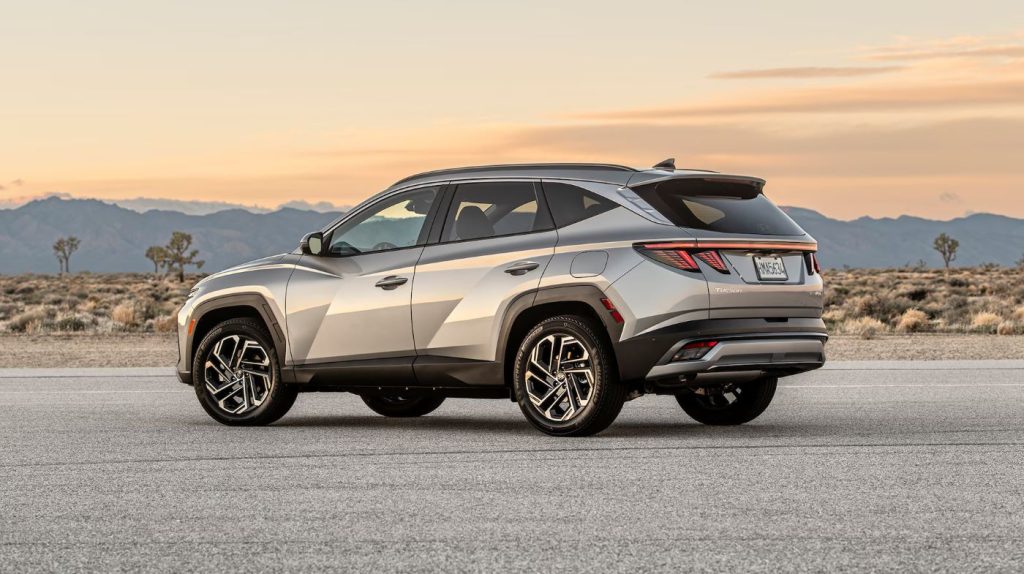
If your needs lean more toward relaxed commutes and quiet road trips, however, the Tucson is a strong contender, particularly in the higher-end trims that come outfitted with upscale materials, added conveniences, and more advanced tech features.
In terms of rankings, the Hyundai Tucson holds the #6 spot among the Best Compact SUVs. Leading the pack is the Honda CR-V at number one, starting at $31,495, followed by the Mazda CX-50 in second place with a starting price of $31,720.
The Mazda CX-5 comes in third at $30,190, the Ford Bronco Sport lands fourth at $31,590, and the Volkswagen Tiguan rounds out the top five at $30,305. The Hyundai Tucson, with a starting price of $30,155, follows closely behind these leaders.
For 2025, the Tucson benefits from a styling refresh, marking its fourth year on the market. The updates include redesigned grille, bumpers, and wheels, giving the exterior a more modern, refined look.
Inside, Hyundai has replaced the old optional infotainment setup with a new design that integrates two displays—one for infotainment and one for the gauges—within a single rectangular frame mounted on the dashboard.
Entry-level models now come equipped with a single 12.3-inch touchscreen combined with analog gauges. Additionally, the Tucson’s steering wheel design has been revised, and the climate control panel has been updated to match the freshened interior aesthetic.
2025 Mazda CX-30
The 2025 Mazda CX-30 ranks near the top of its highly competitive class. Its fuel economy ratings are typical for an SUV of its size, offering up to 26/33 mpg city/highway.
Inside, this subcompact SUV features a cabin that rivals those of entry-level luxury SUVs, with high-quality materials used throughout.
Adults will find the rear seats comfortable, and the CX-30 offers more headroom than most of its competitors.
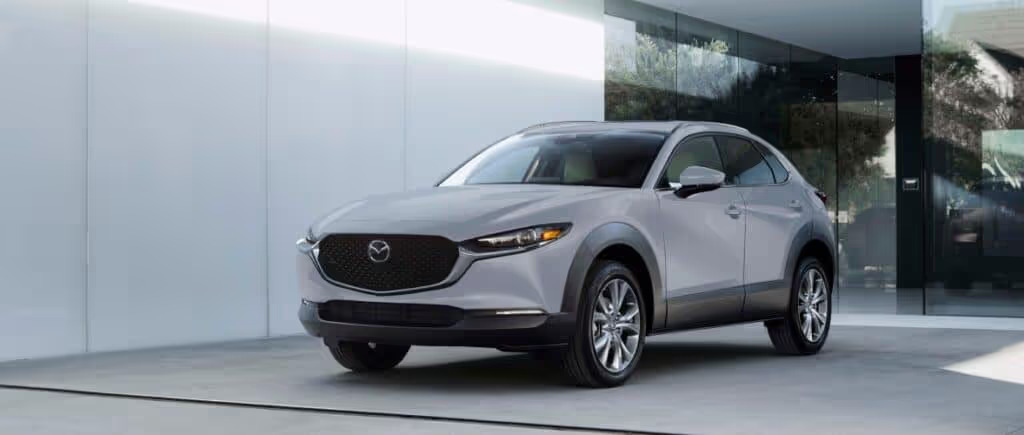
Although the cargo hatch opens wide for easy access, the overall cargo space is slightly smaller than that of rival models. Meanwhile, the front seats deliver all-day comfort for the driver.
The infotainment system can be operated using a rotary knob or, when a smartphone is connected, by touch. A comprehensive suite of standard safety features includes adaptive cruise control and a rear-seat alert system, helping passengers remember any belongings they may leave behind.
2025 Kia Soul
Passengers might not realize it, but they should be happy to see a 2025 Kia Soul pulling up to the curb. It ranks as one of the best in its class, offering a wealth of standard features, a spacious interior, and a starting price just slightly over $20,000.
This winning combination earned it the 2025 Best Subcompact SUV for the Money award, marking its second consecutive win.

The Soul’s four-cylinder engine provides lively performance for city driving, although acceleration feels a bit sluggish on the highway. It achieves fuel economy estimates of up to 29/35 mpg city/highway.
Thanks to its small size, the Soul can easily maneuver into tight parking spots, yet it also boasts one of the largest cargo areas in its class, offering 24.2 cubic feet of space with all seats upright.
Also Read: 10 EVs That Still Perform Well After 100,000 Miles, Safety & Reliability
Cars That Are Bad for Ride-Sharing App Drivers
Choosing the right vehicle for your work as an Uber or Lyft driver can make a significant impact on your profit margins. Pick the wrong car, and you could end up stuck with a money pit that drains more cash than it brings in. Hidden costs can quickly transform some popular models into financial burdens on wheels.
If you’re searching for the ideal ride-share vehicle, be cautious of cars that carry high maintenance costs, poor fuel efficiency, or steep depreciation rates. While some vehicles are beloved by drivers for their dependability and affordability, others are known for being the complete opposite.
It’s important to factor in the expenses associated with rideshare driving, as they directly cut into your earnings. Full-time rideshare drivers typically add a significant amount of mileage to their cars—about 30,000 to 45,000 additional miles per year.
This increased use means you’ll need more frequent maintenance and will spend more on fuel compared to the average driver. The main expenses rideshare drivers can expect include fuel, insurance, maintenance and repairs, and depreciation.
Cadillac Escalade (ESV)
One bad option for a full-size SUV is the Cadillac Escalade Extended Stretch Vehicle (ESV). The Escalade offers plenty of space and luxury, but it comes with numerous hefty costs.
You’ll find yourself spending more at the gas station than saving in your bank account, as the Escalade only achieves 16 miles per gallon and requires premium fuel. In addition, this vehicle depreciates by 41%, which is a significant amount given its high initial price.
While offering an XL ride might allow you to charge more through ride-share apps, you’ll also be stuck with XL-sized expenses.
The MSRP for the Escalade is $84,190, its fuel economy is 16 MPG, insurance costs range between $850 and $1,000 per year, maintenance and repairs average $1,127 per year, and the depreciation rate is 41% over five years.
The Escalade ESV comes with several notable pros. It features a slick tech interface, boasts one of the roomiest cabins in its class, offers abundant cargo space and in-cabin storage, and delivers boisterous V8 power in the Escalade-V ESV variant.
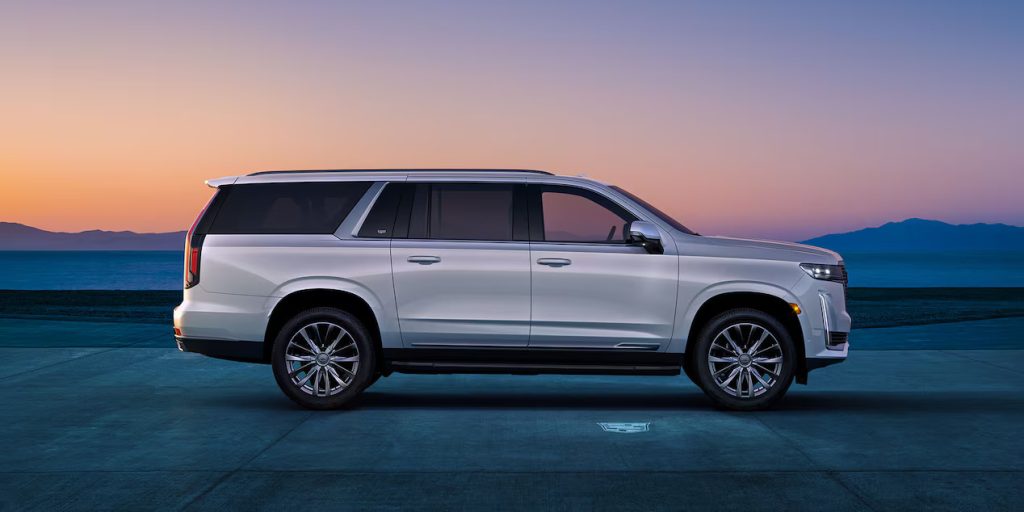
However, it does come with some cons; its size makes parking and maneuvering in tight spaces a challenge, and the rear cabin quality falls short compared to some class leaders.
For 2025, the Escalade ESV introduces several updates. There’s a refreshed styling inside and out, the addition of a massive curved display, and the discontinuation of the diesel engine option. This marks the continuation of the fifth Escalade generation that debuted in 2021.
Cadillac has never been a brand associated with subtlety. Whether it’s the iconic tailfins of the 1950s or the sheer size of the Escalade, Cadillac thrives on boldness.
For those who believe that “too much is almost enough,” the larger Escalade ESV fits the bill perfectly, standing as the longest SUV on the market today—stretching over a foot longer than the standard Escalade. This extended size brings with it significantly more passenger and cargo space.
However, this extravagance comes at a steep cost, often pushing prices past the six-figure mark, and you’ll be fortunate to see 18 mpg in fuel economy.
When it comes to the cost of ownership, estimates for the 2025 Cadillac Escalade ESV Luxury 4dr SUV (6.2L 8cyl 10A) based on 15,000 miles per year (with 55% city and 45% highway driving) and premium unleaded gas priced at $3.90 per gallon in North Dakota show a monthly cost of $290. In comparison, the average large SUV costs around $226 per month.
Highlighting the 2025 updates, the Escalade ESV sees significant changes designed to align it more closely with the futuristic, all-electric Escalade IQ.
The most striking update is inside the cabin, where a colossal 55-inch infotainment display now stretches the full width of the dashboard. This stunning piece of tech alone might justify the high price tag.
Adding to its appeal, GM’s highly regarded Super Cruise driving system is now standard across all models. However, not all the news is positive; the more fuel-efficient and better tow-capable diesel engine option has been discontinued.
When comparing the Escalade ESV to competitors, it is certainly the largest SUV available, but it doesn’t automatically take the top spot.
In direct comparison, the Lincoln Navigator L proves to be slightly more modern and refined, earning our preference. Meanwhile, the Jeep Grand Wagoneer L offers greater towing capability but doesn’t match the Escalade’s comfort levels.
For those seeking pure luxury, the smaller Mercedes-Benz GLS and BMW X7 offer superior materials and craftsmanship, though neither can rival the Escalade’s massive interior space.
For those wondering which Escalade ESV to choose, Edmunds recommends the Premium Luxury trim.
It commands a $9,000-plus price increase but justifies the cost with several worthwhile upgrades. Magnetic Ride Control suspension enhances both comfort and stability, and a panoramic sunroof highlights an interior richly adorned in leather.
Tesla Model S
A bad option for an electric vehicle is the Tesla Model S. This zippy, eco-friendly car is very trendy right now. Despite the costs associated with an at-home charging station, you’ll save on fuel compared to most gas vehicles.
However, beware of pricey insurance and costly (and frequent) repairs. The Tesla Model S is a high-investment vehicle that might break the bank as much as it breaks down.
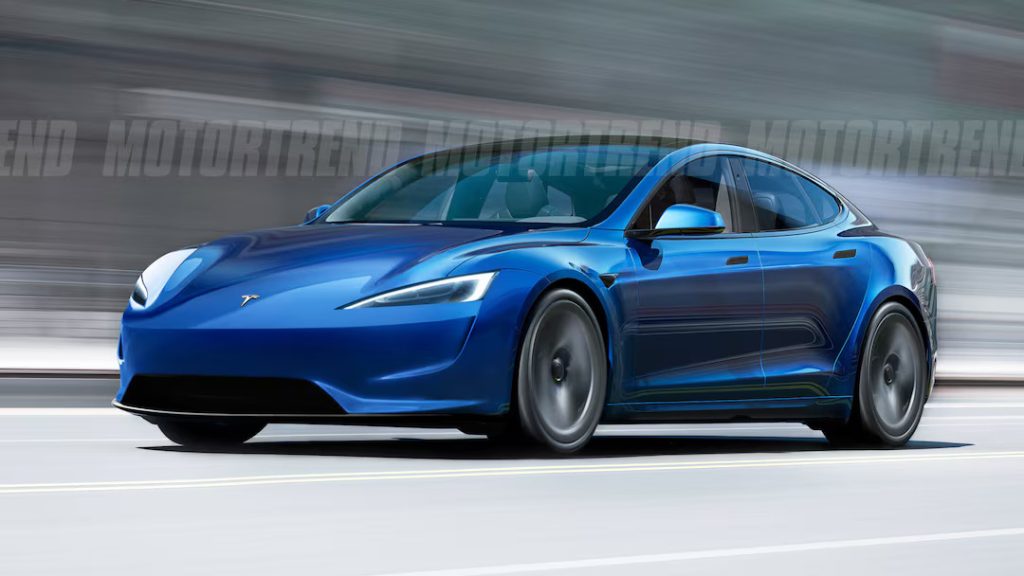
The MSRP is $74,380, it offers a fuel economy of 122 MPGe, insurance costs range from $960 to $1,100 per year, maintenance and repairs average $1,047 per year, and the vehicle depreciates by 35% over five years.
BMW 5 Series (530e)
A bad option for a plug-in hybrid is the BMW 5 Series (530e). This luxury sedan is a plug-in hybrid boasting an excellent 62 MPGe. You might be saving at the pump, but you’re still going to be paying a premium for the luxury badge.
Plus, this vehicle has some of the worst depreciation on the market, losing nearly half of its value within five years of purchase. While fairly reliable, these German-made vehicles require expensive upkeep.
When you need repairs, you’ll be opening your wallet wide, since not every mechanic can work on a BMW and parts must be shipped internationally.
The MSRP for the 530e is $59,695, its fuel economy is 62 MPGe, insurance costs range between $850 and $1,000 per year, maintenance and repairs average $968 per year, and the depreciation rate is 45% over five years.
Part of the reason for the BMW 5 Series’ ongoing success is BMW’s consistent effort to keep the model updated. The latest generation even includes an electric option—the BMW i5—which you can read about in a separate review. Here, however, the focus is on the other variants.
The most affordable model in the lineup is the 520i, which is powered by a 205bhp 2.0-litre mild-hybrid petrol engine.
There are also two plug-in hybrid options available: the 530e, which delivers 295bhp, and the 550e, boasting an impressive 482bhp. (If you’re interested in the high-performance version, see our BMW M5 review.)
Rival models include the Audi A6 and Mercedes E-Class, so in this review, we’ll examine how the new BMW 5 Series stacks up against those competitors across key areas. We’ll cover everything from its driving dynamics to practicality and ownership costs.
The BMW 5 Series distinguishes itself as a superior all-rounder compared to its direct rivals by combining a sophisticated, user-friendly interior with exceptional refinement and dynamic handling.
That said, it’s important to note that many desirable equipment features are expensive add-ons, and fully electric models (including BMW’s own i5) are cheaper to operate as company cars.
The 5 Series shines with its composed handling, beautifully finished interior, and class-leading infotainment system.

However, it’s not without drawbacks: the gearbox can be slow to respond, adding certain options quickly inflates the price, and electric rivals incur lower Benefit-in-Kind (BIK) tax costs.
New car deals for the 5 Series start from £47,980, with estimated monthly payments from £635. Leasing options are available from £604 per month. Among the range, we particularly recommend the BMW 530e M Sport 4dr Auto, which has a recommended retail price (RRP) of £52,195.
In terms of performance and drive, even the entry-level 520i offers respectable speed, reaching 0-62mph in 7.5 seconds.
However, you’ll need to rev the engine fairly hard for brisk acceleration. The standard eight-speed automatic gearbox generally shifts smoothly and intelligently, but when a sudden burst of speed is requested, it can hesitate noticeably before kicking down with a slight jolt.
Drivers looking for a more responsive experience should consider the BMW 530e plug-in hybrid (PHEV).
This version benefits from an electric motor that helps eliminate any delay during acceleration, reducing the 0-62mph sprint to 6.3 seconds. The even more potent 550e cuts that sprint time down by two full seconds.
Moreover, both plug-in hybrids offer commendable electric-only ranges, with the 550e officially capable of 55 miles on a full charge and the 530e stretching that to 63 miles. Nonetheless, the Mercedes E300e edges both out, offering around 70 miles of electric range.
While BMW vehicles often perform best with adaptive suspension, even the standard passive suspension setup in the 520i and 530e models ensures confident handling.
Compared to the Audi A6 and Mercedes E-Class, the 5 Series offers better body control, and its precise, well-weighted steering further builds confidence when cornering.
On rougher roads, there is some fidgeting, especially noticeable in the heavier plug-in hybrids, but the 5 Series remains generally composed over larger bumps or potholes, never becoming overly harsh.
As for refinement, the 520i’s engine remains smooth and quiet at cruising speeds, offering a satisfyingly sporty growl when pushed. The same can be said for the 530e, though being a plug-in hybrid, it has the additional benefit of near-silent electric driving at lower speeds—ideal for city environments.
At higher speeds, there is slightly more wind noise around the door mirrors than you would experience in a Mercedes E-Class, but overall, the 5 Series still maintains an impressively quiet and refined ride.
Ram 1500 TRX
A bad option for a full-size truck is the Ram 1500 TRX. Besides the sticker shock of its nearly six-figure price tag, the Ram 1500 TRX will really start to cost you at the fuel pump.
This truck has some of the worst gas mileage on the market, getting only 12 miles per gallon. That means your annual fuel costs will be $7,500 more than average.
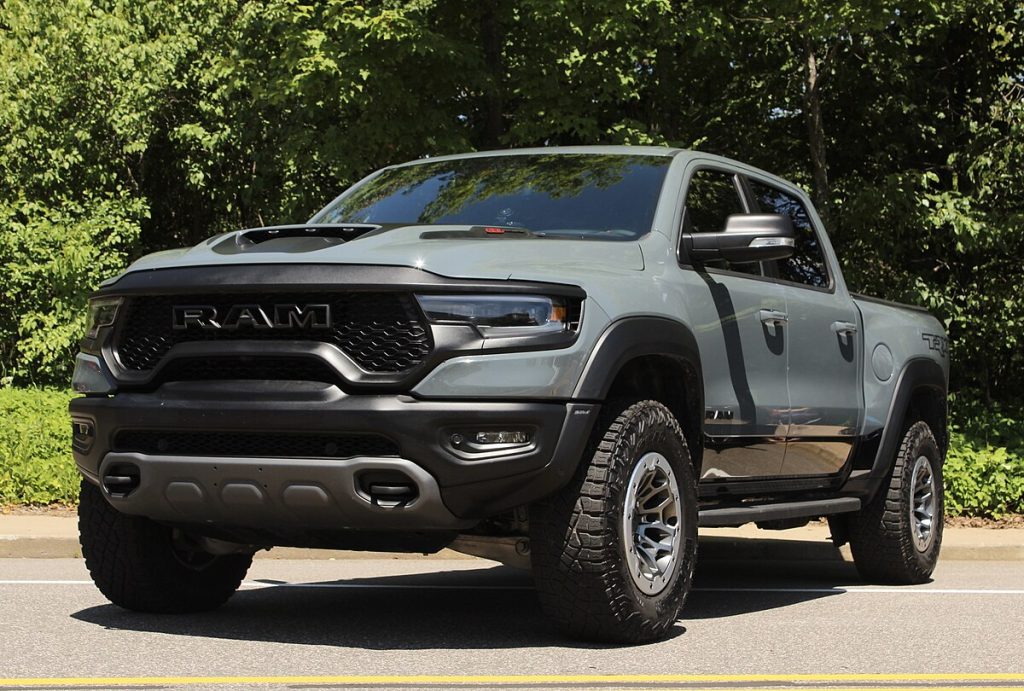
On the positive side, the Ram 1500 boasts the highest reliability rating among full-size trucks, which results in average maintenance and repair costs.
Depreciation and insurance costs are also fairly average. The MSRP for the Ram 1500 TRX is $98,335, its fuel economy is 12 MPG, insurance ranges from $750 to $850 per year, maintenance and repairs cost $691 per year, and depreciation is 31% over five years.
Jeep Wrangler
A bad option for a compact SUV is the Jeep Wrangler. While this popular off-roader has its appeal, it will unfortunately require you to spend a lot of time off the road getting repairs done in the shop.
While maintenance costs for this American-made vehicle are average, the downtime spent at the shop means it will cost you in terms of lost time—time you could otherwise be spending picking up passengers.
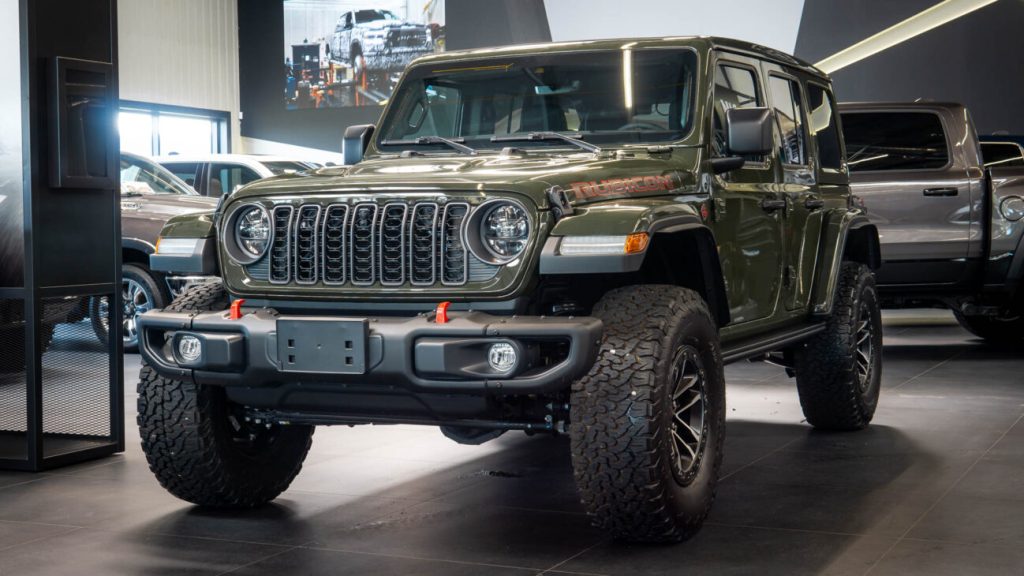
The Wrangler ranks 25th out of 26 compact SUVs for reliability, meaning there are 24 better options than the Jeep when it comes to choosing an affordable rideshare car.
The MSRP for the Jeep Wrangler is $32,990, its fuel economy is 21 MPG, insurance costs range between $580 and $670 per year, maintenance and repairs average $694 per year, and depreciation is 22% over five years.

